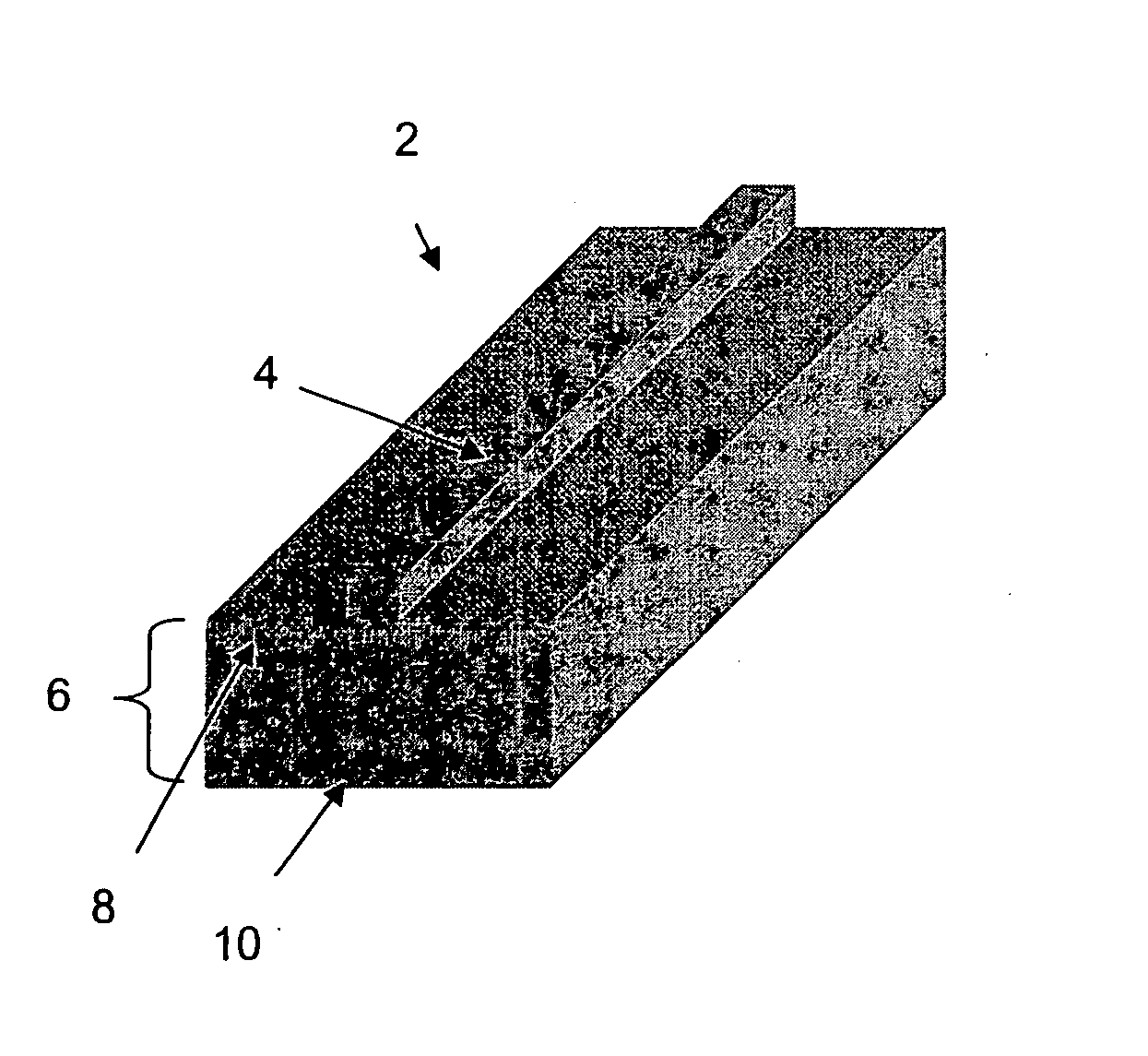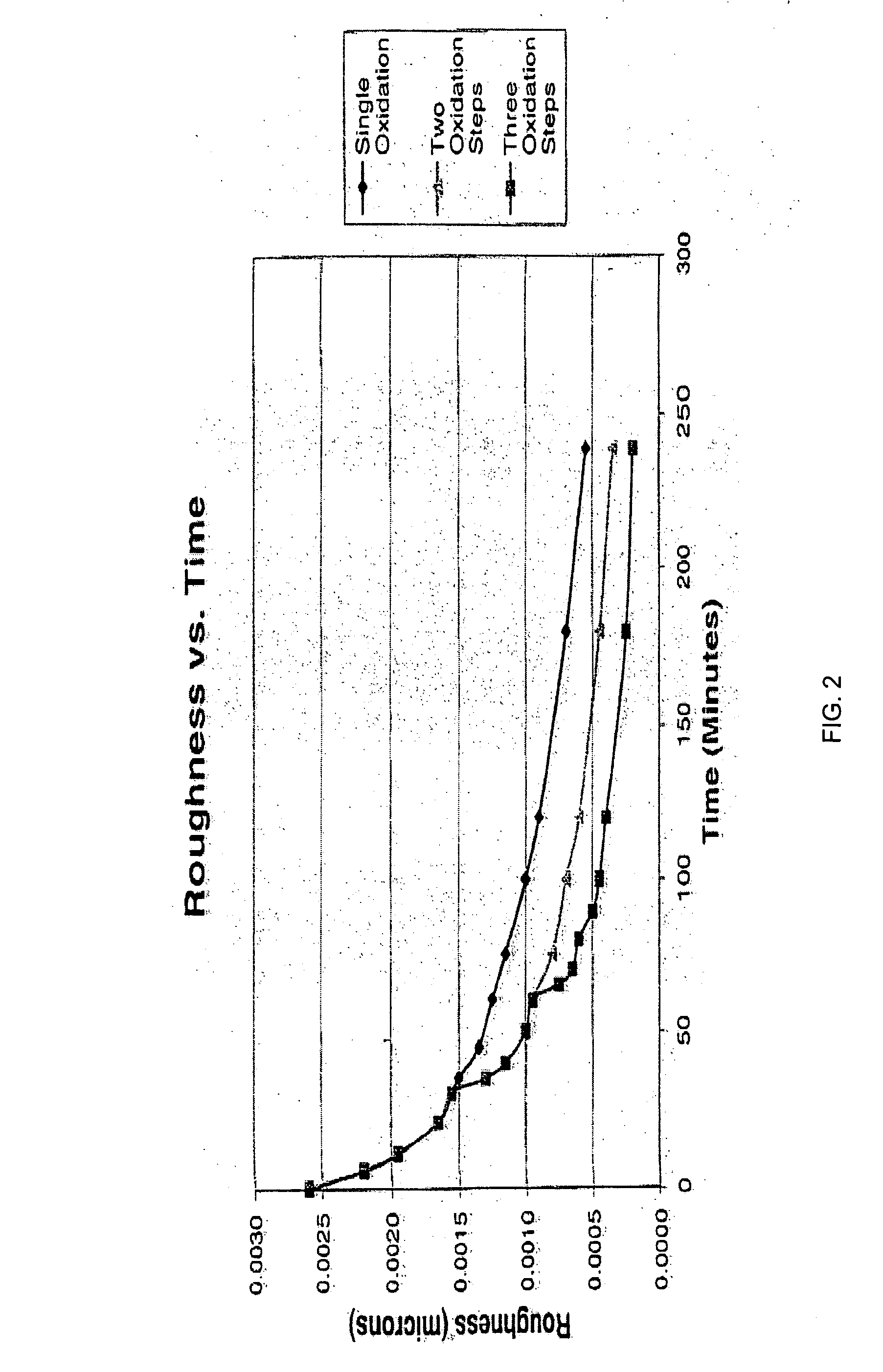Multiple oxidation smoothing method for reducing silicon waveguide roughness
a silicon waveguide and multi-oxidation technology, applied in the field of optical communication, can solve the problems of detriment to choosing this smoothing technique, low roughness of waveguides, and substantial roughness on the sidewalls, so as to reduce the overall time of oxidation and volume of oxidized materials, reduce the roughness of sidewalls, and reduce the roughness of waveguides
- Summary
- Abstract
- Description
- Claims
- Application Information
AI Technical Summary
Benefits of technology
Problems solved by technology
Method used
Image
Examples
Embodiment Construction
[0013] The invention is a novel processing method for reducing waveguide roughness in waveguides. While similar to oxidation smoothing, the inventive multiple oxidation smoothing method (MOSM) reduces oxidation time significantly by remaining in the fast, reaction-limited regime, rather than the slow, diffusion-limited regime.
[0014]FIGS. 1A-1B illustrates the method steps taken to reduce waveguide roughness in accordance with the invention. FIG. 1A shows a Si waveguide 2 used in accordance with the invention. The Si waveguide 2 is formed by depositing a Si layer 4 on an oxidized Si wafer 6. The oxide layer 8 on a Si wafer 10 serves as the undercladding for the waveguide 2, which is comprised of low index material. The deposited top Si layer 4 is etched with a photolithography mask to define the waveguides. This leaves a waveguide with rough sidewalls on top of an oxide surface, which is above the Si wafer. The lower oxide cladding 8 is not touched by the MOSM process.
[0015] When a...
PUM
 Login to View More
Login to View More Abstract
Description
Claims
Application Information
 Login to View More
Login to View More - R&D
- Intellectual Property
- Life Sciences
- Materials
- Tech Scout
- Unparalleled Data Quality
- Higher Quality Content
- 60% Fewer Hallucinations
Browse by: Latest US Patents, China's latest patents, Technical Efficacy Thesaurus, Application Domain, Technology Topic, Popular Technical Reports.
© 2025 PatSnap. All rights reserved.Legal|Privacy policy|Modern Slavery Act Transparency Statement|Sitemap|About US| Contact US: help@patsnap.com



